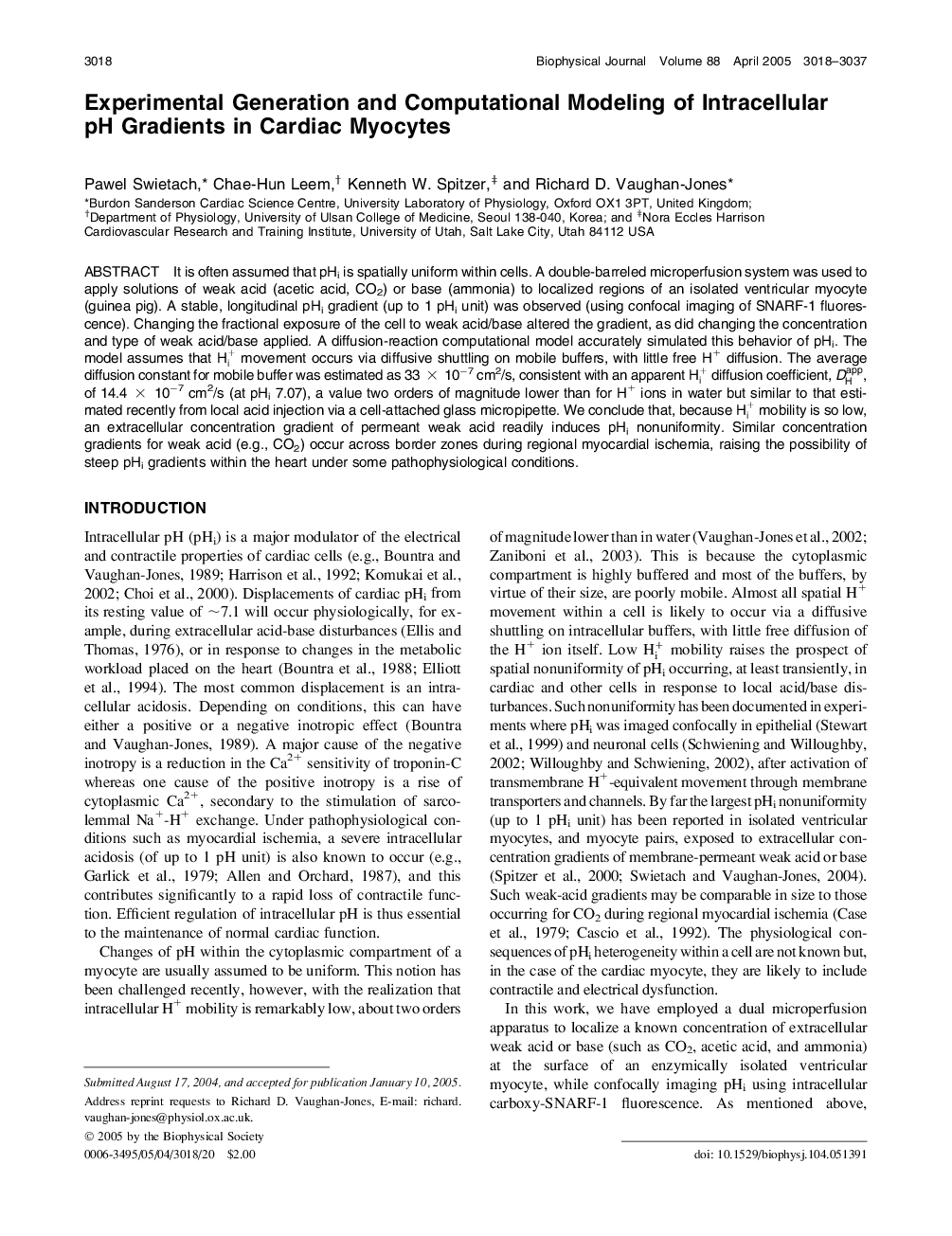| Article ID | Journal | Published Year | Pages | File Type |
|---|---|---|---|---|
| 1959593 | Biophysical Journal | 2005 | 20 Pages |
It is often assumed that pHi is spatially uniform within cells. A double-barreled microperfusion system was used to apply solutions of weak acid (acetic acid, CO2) or base (ammonia) to localized regions of an isolated ventricular myocyte (guinea pig). A stable, longitudinal pHi gradient (up to 1 pHi unit) was observed (using confocal imaging of SNARF-1 fluorescence). Changing the fractional exposure of the cell to weak acid/base altered the gradient, as did changing the concentration and type of weak acid/base applied. A diffusion-reaction computational model accurately simulated this behavior of pHi. The model assumes that Hi+ movement occurs via diffusive shuttling on mobile buffers, with little free H+ diffusion. The average diffusion constant for mobile buffer was estimated as 33 × 10−7 cm2/s, consistent with an apparent Hi+ diffusion coefficient, DHapp, of 14.4 × 10−7 cm2/s (at pHi 7.07), a value two orders of magnitude lower than for H+ ions in water but similar to that estimated recently from local acid injection via a cell-attached glass micropipette. We conclude that, because Hi+ mobility is so low, an extracellular concentration gradient of permeant weak acid readily induces pHi nonuniformity. Similar concentration gradients for weak acid (e.g., CO2) occur across border zones during regional myocardial ischemia, raising the possibility of steep pHi gradients within the heart under some pathophysiological conditions.
